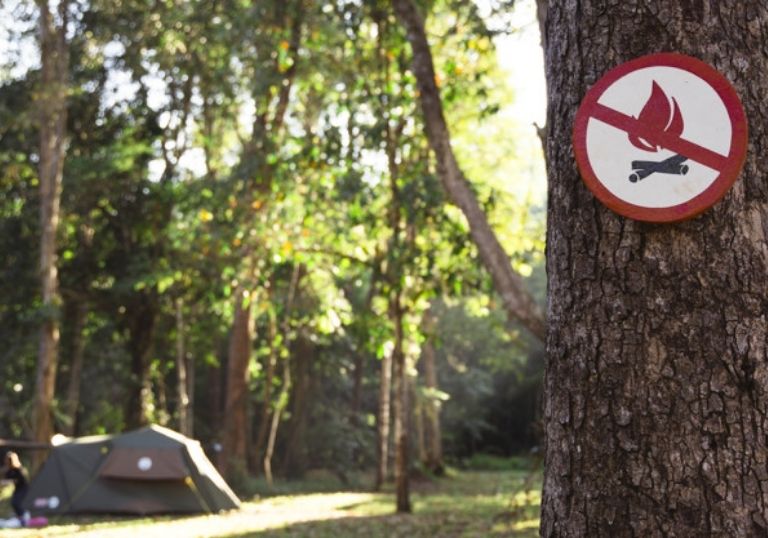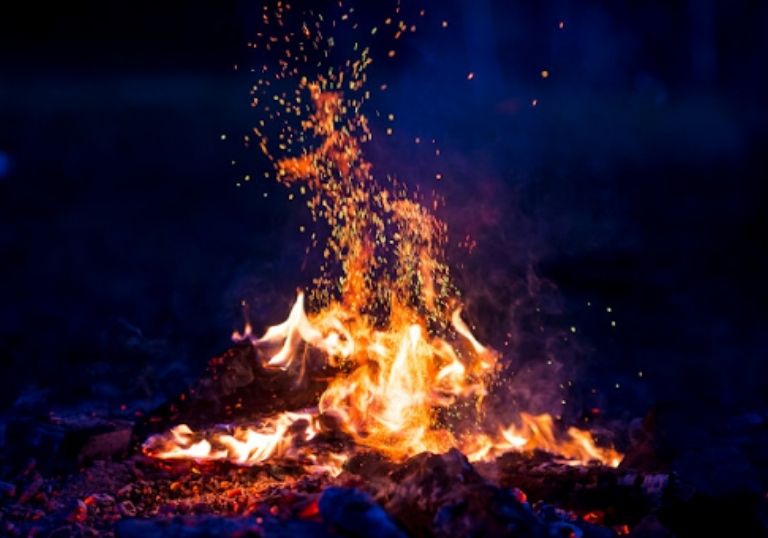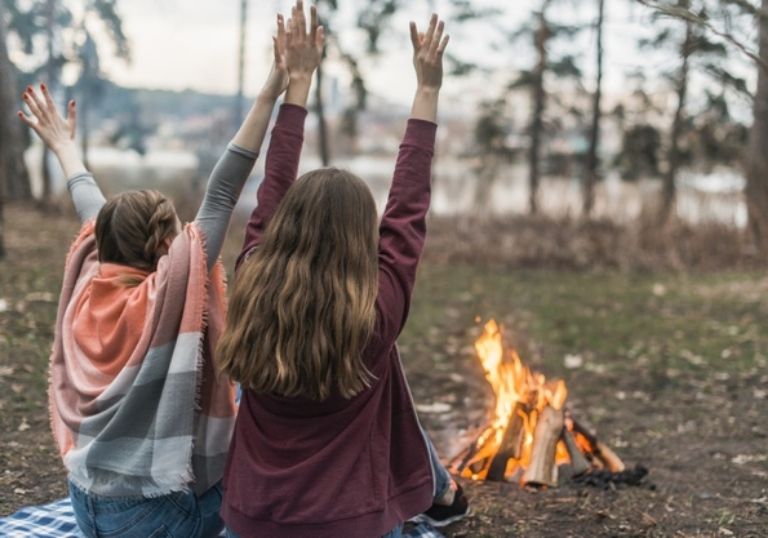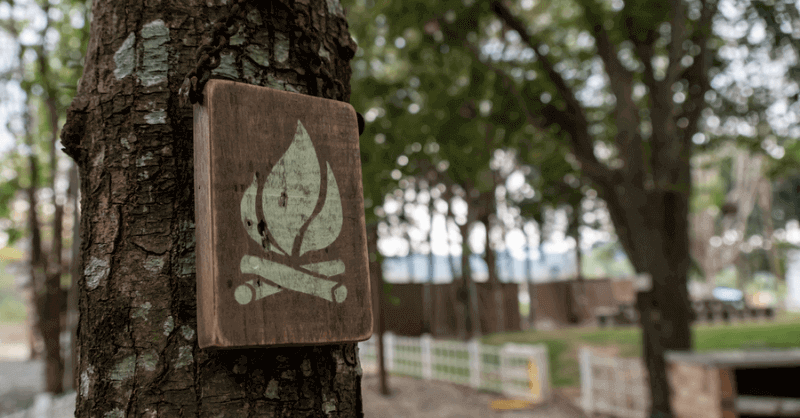Faint guitar strums, favourite songs, smokey air, burning marshmallow to yummy smores and lots and lots of chirping stories. All this happens when you have a great bonfire, whether in your garden, open space or on the beach. Bonfire rules is a great way to spend recreational time and create loving memories with close ones.
A bonfire is a large handmade fire used by burning woods and garden wastes, and other unusable products. Creating a bonfire is a prehistoric tradition celebrated by people. People used to tell tales, keeping the body warm and also keeping away ferocious animals. But time has changed due to electric lights’ inventions, heaters and storytimes have shifted to living rooms.
Burning anything to create bonfires might not be wise, as it may cause environmental damage. Though it is not illegal, uncontrolled burning of anything may cause excessive smoke and health hazards. Neighbours or people who are passing the road may object to unwarned smoke and display of fire.
This guide helps you with the garden bonfire rules and how to build a safe bonfire without disturbing neighbours or others.
Table of Contents
What are the Legal Laws and Regulations for Building Garden Bonfire?

Garden fire or bonfire is not illegal, but there can be legal consequences for any kind of disturbance caused by the bonfire. It is normal when burning things; there will be odd fumes, smokes, particles etc., that can float around. It is necessary to take precautions to prevent any harmful effect that will probably cause to nature or human health. Following them is essential for one’s safety and others, and by tracking the rules, you will be able to avoid complaints.
These laws of garden fire or bonfire are as the following:
1. Under the Environmental Protection Act, 1990, one cannot dispose of waste products that may cause environmental pollution or is unhealthy for human beings and other animals. Burning domestic waste is one kind of disposing of waste. Waste products that release excessive carbon emission or too much smoke and fumes are forbidden to burn. Materials that might cause poisonous fumes can be plastics, rubber, old oil, etc. Creating a bonfire out of this harmful material just not only causes harm to one’s own health but to others too, and it is considered a criminal offence.
2. Smokes created from fire should not float across any nearby highway or roads under the law of section 161A of the Highways Act 1980. The smoke may endanger the passing traffic’s life by blocking their view, leading to accidents. You might get fined for situations like this. If you find that the fire you made is causing a nuisance, you should contact the police immediately before the condition worsens.
3. When a bonfire is causing disturbance to the neighbourhood to a limit that diminishes the neighbours to be in comfort on their own property, it can result in ‘abatement notice’. If the neighbours cannot enjoy their own garden or opening windows because of the smoke created by bonfires may cause a nuisance. Drifted smokes, ashes and other things that might cause property destruction is against the law. Not following the rules of the notice may cause a fine of £5,000.
These bonfire laws help to protect you and your surroundings in the best possible manners. Abiding by the law will also help to have a great time around the fire. The law also takes into consideration how frequently you make bonfires. If it is not frequent and occurs occasionally, then it can be considered safe.
How to Burn Garden Waste Without Smoke?

Burning garden waste is not the most environmentally friendly way of getting rid of them. Setting the garden waste on fire will produce thick smoke, especially when the burnt stuff is damp and smoulders. Moreover, burnt materials may contain toxic chemicals, including carbon monoxide, nitrogen oxides, hydrocarbons, and particulate matter.
If you want to have a bonfire for sure, keep the following into consideration:
- Consider other ways of getting rid of it, such as composting the garden waste.
- Place your bonfire as far away from buildings as possible.
- Burn only dry wood and plant waste. Do not burn material that will create toxic fumes, for example, plastic, rubber or aerosols.
- Never leave a fire to smoulder; put it out with water or soil.
- Remember that smoke hangs in the air on damp, windless days and in the evening.
Problems Caused by Burning Garden Waste
Contribute to the environmental pollution, along with the general level of air pollution. When burning the garden waste, it forms dark or white smokes. The smokes usually contain pollutants such as carbon monoxide, dioxins and particles. Burning plastics, rubbers, paints, and other polymers creates a foul smell and releases different types of highly poisonous compounds. Other problems of burning garden wastes are:
- Risky and unsafe.
- Creates poisonous gas and materials when burning
- cause harmful health issues
- Although bonfire smoke doesn’t cause many problems in general people, it severely affects people and children suffering from lungs and heart conditions such as asthma and bronchitis.
- You may receive complaints from councils or neighbours about smoke, soots and fumes caused by the bonfire.
- Smoke makes the surrounding foggy, decreasing the visibility of the surrounding areas and roads.
- May spread fires to surrounding areas and objects such as trees and fence, and electric cables.
- Fire might harm the wild animals around or sleeping animals inside the dump used for creating fire.
What are the Best Practices and Rules to Make a Safe Bonfire?
Fires are quick to spread, and a tiny spark can cause a massive fire if you do not handle a bonfire cautiously. A bonfire may be a great way to dispose of garden waste, but it is essential to be mindful of its effect on your neighbours and the community. To stop your bonfire from being harmful, follow the tips given below:
- Altogether avoid burning plastics, polythene, paints, rubber, old patrols or oil, aerosols. These materials may cause severe consequences as they may poisonous gas and also cause big explosions that may lead to injuries.
- Do not burn something wet or damp and also something that can be a commercial waste as doing so may increase the amount of smoke and fumes.
- Burn garden waste that is dry like bark, dead flowers, grass and hedge cuttings, leaves, plants, small branches, twigs and weeds.
- Avoid burning domestic waste that should go into your general waste or recycling containers, such as food and plastic packaging.
- Leave notice for the neighbours so they are warned ahead of time about the bonfire. The neighbours are unlikely to complain if they know about any kind of smoke or flames that is preplanned and harmless.
- Ensure the fire you build is away from any kind of trees, fences, hedges, overhead cables and buildings, or anything at risk of catching fire.
- Ensure that you have a water sprinkler or water pipe around, which will help you control the fire if things get serious. You can also keep a fire extinguisher nearby in case of an emergency.
- Take any possible steps that may cause nuisance or disturbance to the neighbours. In contrast, building the fire check on the direction of the winds and also the weather. Smoke stays for a long time in damp and still weather. Avoid lighting fire if the weather is windy and smokes drift off quickly to the neighbourhood and roads.
- Ensure that you are burning material quickly and in small amounts to create a more minuscule amount of smoke.
- Do not use any kind of oil or spirits to create flames, and also avoid dumping any type of explosive in the fire as it will cause harmful effects to everyone and the environment.
- Always keep your bonfire attended and in check. Do not leave it alone to burn out.
- Ensure that all the flames are burnt out and extinguished with water and the bonfire is cold before leaving the site.
- Ensure that children and domestic animals, and pets are away from the fire.
Familiar ways of Getting Rid of Garden and Domestic Waste
Burning is not the only way of disposing of garden waste. There are more convenient and eco-friendly ways to dispose of unwanted waste.
1. Composting
Composting can be an environmentally friendly way of disposing of garden waste without having much of a nuisance. You can decompose organic materials such as leaves, vegetables, vegetable peelings, fruits, and waste paper and cardboard. This will break down the product into humus and turn them into fertiliser. Composting is an effective gardening method as it recycles, re-use and returns essential nutrients into the garden. The use of compost to support the soil health in your garden will enhance tilth, increase water retention, and build air pockets for plant root growth.
2. Local Tips and Recycling Centres
If your main intention of creating a bonfire is to burn the garden waste, consider if you can take your waste to the local tips and recycling centres. It is a much safer and environmentally friendly way of disposing of any sorts of rubbish. Buy big bins to store a week or two worth of garbage and take them to your local tips or recycling centre when convenient.
3. Use a Shredder / Chipper for Garden Waste
You may want to buy garden waste chippers or shredders if you can’t really handle having your tree trimmings waiting around, or even if you do trimming the waist, it won’t fit into your garden waste bin. Shredding the garden waste into pieces will quickly turn them into a smaller and convenient store for later disposal.
4. Council Bins and Waste Collection Services
You can always turn your waste to the council bins and the waste collectors who come at a regular interval to collect garbage and keep the neighbourhood clean. If you have them, use your general waste and recycling bins, as well as a garden waste bin or a food waste bin.
When and Where can You do Bonfire?

There is no legal time for lighting a bonfire. You can do it whenever you like. But it is a general courtesy toward the neighbours and surrounding to light a bonfire in the early morning or early evening. At this time, the neighbours are less likely to be affected by the smoke or fire.
The end of summer or autumn is a great time to do a bonfire, as there is an abundance of dried leaves and twigs in the garden.
Furthermore, ensure that you chose a still or less windy day so that the smoke doesn’t drift off far away than planned. Make sure the day is not damp either as smokes and fumes stick longer in the air than expected. Also, keep in mind that dry and hot weather also can be risky to do a bonfire as there is the possibility of wildfire.
Lastly, do not light a fire during the night as it may alert the fire service and neighbours. Also, ensure that neighbours are not putting their laundry for drying outside, as the clothes may get covered in soot or, worse, catch fire.
There could be limitations if you are planning on holding a bonfire in a public space, such as on the beach. Before getting your bonfire, consult with the landowner or the local council. As part of the Criminal Damage Act 1971, there are safety regulations; any fire considered a danger to persons or property would be a criminal offence, whether the damage is intentional or by reckless conduct. Assure that when you’re done with the bonfire, you clean up any mess. Otherwise, the landowner will begin banning them.
Your garden or backyard is a great place to have a bonfire. If you are arranging your Bonfire Night, be mindful that there are rules on the use of fireworks. You cannot do a bonfire between 11 pm, and 7 am. Besides, during some holidays and festivals (Bonfire Night, Chinese New Year, Diwali and New Year’s Eve), the time is stretched till1 am.
Tips on Enjoying your Bonfire

You have informed the neighbours and the council about the bonfire. Sorted out toxic and damp waste from the bonfire waste. Selected a suitable day and time to do the bonfire. Now it’s time to enjoy the best bonfire of your life. You have to invite your crowds but here is also how to have a great time.
- Pick up a favourite site, that can be your garden, campsite or on the beach.
- Collect your sorted out garden waste and arrange them in piles around so that you can burn them in small quantities. Ensure that you have larger woods to fuel your bonfire.
- Dig a pit on the ground. The size of the pit should be as big as the bonfire you want to make. Most reasonable size is around 50 centimeter (19.7 in) x 50 centimetres (19.7 in) and 1 meter (3.3 ft) x 1 meter (3.3 ft).
- Use stones and bricks around the pit circumference. This will prevent the fire from spreading beyond the territory.
- Set the fuel woods first. Organise the woods, twigs, or wooden sticks, standing like a pyramid, and put the leaves underneath.
- Ignite the woods using matches, or first burning a bundle of sticks and placing them with leaves that are arranged under the bonfire pit.
- Arrange the chair on the lawn or wherever you plan to have the bonfire. Make sure the seats are a few feet away from the bonfire. You can also spread a picnic blanket or rugs for sitting arrangements. Standing and getting warm close to the fire is fine as long as anyone is not playing with the fire.
- Ensure that kids and pets are at a safe distance from the fire.
- Bring a cooler filled with ice. You can store beverages and drinks on the ice. Nothing is better than sipping an ice-cold beer, an energy drink, hot cocoa or a can of coke while relaxing around a bonfire. The ice is also going to be helpful when you put out the flames.
- Have fun by cooking some food in the fire, like burning marshmallows, which is a classic activity. You can roast hot dogs or have a great barbeque too.
- Do not forget about the music. Play music but do not go too loud, which may create a further nuisance.
- Once the party is over, make sure that you are extinguishing the fire properly. First, splash cold water and leftover ices from the cooler on the bonfire. Then stomp it off and spread sand over it. Do not leave the place until it is completely cool.
- If you are doing a bonfire on public property, make sure that you clean up the area.
There you go, you are all set to have a memorable bonfire at your convenient time.
Lastly!
It is always important to stay cautious while handling fire, as the smallest of flames can cause a massive accident. It is also necessary to think about your neighbours and other people’s and natural safety. Create bonfires and enjoy them and also ensure that you are following the rules.
Follow this guideline, and you are all ready to have your very own bonfire.







 April 06, 2021
April 06, 2021








